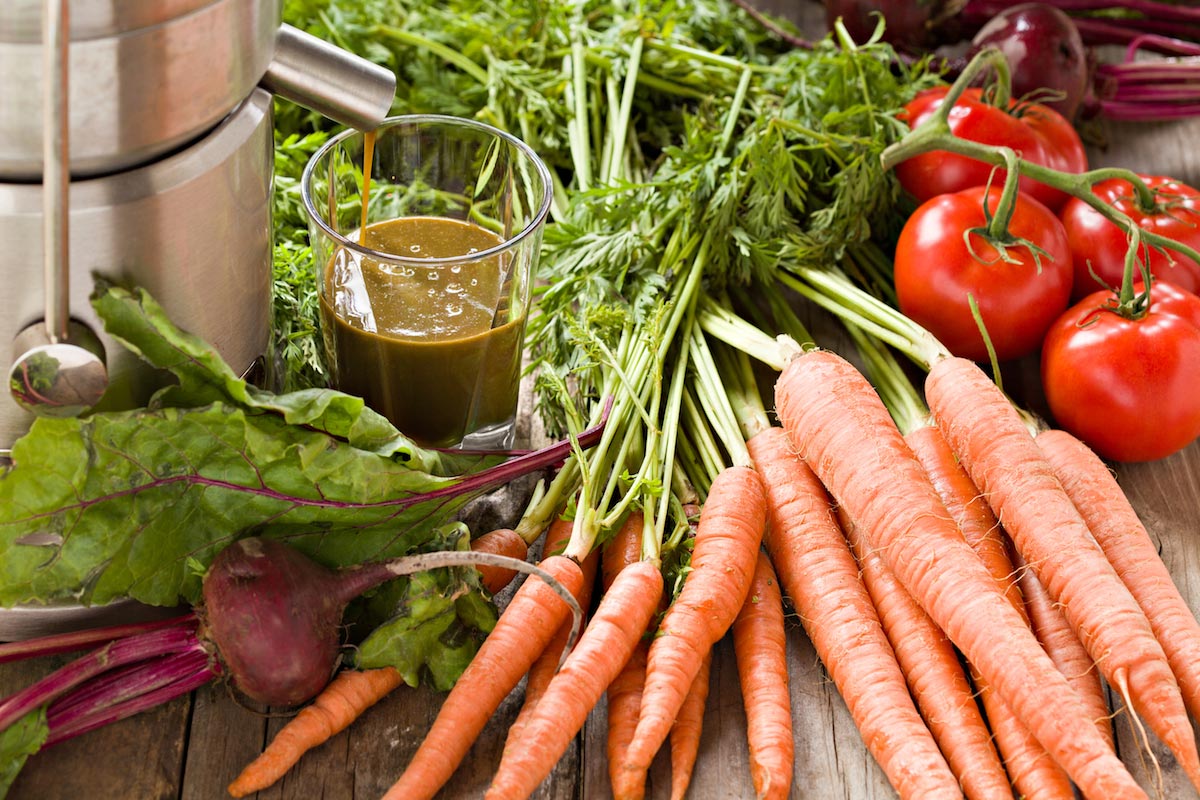
In a recent article published online, Essex-based nutritionist Kerri Jennings shares that drinking pure juice made from fresh vegetables confers higher doses of macro- and micronutrients than just eating the vegetable alone. This is because it takes larger quantities of produce just to make one tall glass of juice.
Proponents of juicing also claim that the process makes it easier to absorb nutrients. In addition, Jennings adds that juicing helps increase a person’s intake of fresh foods.
Best vegetables for juicing
Some foods do not contain as much juice and, as such, are better suited to the blender. Beginners might find it difficult to choose the right foods, so it’s best to take cues from experts and juicing proponents.
On that note, here are nine of the best, nutrient-dense vegetables suited for juicing, according to Rachael Link, a registered dietitian specializing in plant-based nutrition.
Kale
Fresh kale is perfect for making nutritious and refreshing green juice. Kale, classified under the Brassica genus of plants, boasts an incredible nutrition profile rich in both essential nutrients, including fiber, folate and alpha-linolenic acid, as well as beneficial plant compounds like kaempferol and sulforaphane.
Together, these nutrients and organic compounds help boost immune health, fight free radicals, reduce cholesterol and minimize the risk of chronic conditions like heart disease and cancer. (Related: Kale is a nutrient-dense superfood because of these 7 health benefits.)
Carrot
Young, tender carrots are another healthful choice for juicing because of their mild aroma and delicious taste. Introducing carrots in juice form can also help get kids to consume them more often.
On top of their rich biotin and potassium content, carrots also contain significant amounts of beta-carotene, the red-orange pigment in their skin. Beta-carotene doubles as an antioxidant that maintains good eyesight and reduces the risk of age-related macular degeneration.
Beets
Bitter-tasting beets might be an acquired taste for some, but these root crops can confer a range of benefits on human health if consumed as a juice.
For instance, nutritionists find that beets contain high amounts of manganese, potassium and folate. Together, these nutrients regulate blood sugar and promote blood circulation.
The nitrates in beets are also transformed into nitric oxide upon consumption, and this compound helps relax blood vessels for better circulation.
Cabbage
Cabbage might not be a clear first choice for juicing, but studies found that cabbage juice is linked to a number of purported health benefits. These include decreased inflammation, better gut health and balanced hormones.
It also doesn't hurt that cabbage contains the same organosulfur compounds found in kale. Therefore, drinking up on cabbage juice can protect against diabetes, heart disease and other chronic conditions.
Spinach
Like kale, spinach is also a healthful ingredient to add to or use as a base for a green juice. On top of its rich nitrate content, spinach also carries potent antioxidants like quercetin, kaempferol and lutein.
Findings from animal-based research, test-tube studies and clinical trials indicate that these antioxidants can protect against cellular damage and oxidative stress that might lead to cancer later on.
Broccoli
Broccoli belongs to the same group of plants as kale and spinach, so it should come as no surprise that it has been tied to numerous health benefits. The most prominent among these is its anti-cancer effect thanks to kaempferol.
Just don't forget to juice the stalks, too, as these contain a significant amount of protein, calcium and potassium.
Cucumber
Cucumbers contain little to no sugar and calories, so juicing them can be a great choice for diabetics or those at risk of the disease. Don’t add other fruits into the mix to keep the juice’s sugar profile from doubling.
Cucumbers can also keep blood pressure in check and help maintain strong bones because of their high vitamin C content. This immune-boosting micronutrient is integral to the creation of collagen, the main component of cartilage, ligaments, bones, skin and tendons.
Celery
Celery is more than just a hydrating food. Studies found that antioxidants in celery, including kaempferol, caffeic acid and ferulic acid, can reduce high blood pressure and total cholesterol for better heart health.
Tomato
Plump and tender tomatoes are the best for juicing. Rich in vitamin C, potassium and folate, among many others, tomatoes are capable of reducing inflammation, enhancing metabolism and boosting immune health.
Lycopene, the bright red carotenoid found in the skin of tomatoes, also helps protect cells from damage.
Regular consumption of juice made from fresh, organic produce promotes good nutrition and leads to better health in the long run. That said, juicing shouldn’t replace eating fresh produce as-is or incorporating them into recipes.
Read more articles about the health benefits of drinking fresh, homemade juice at FoodIsMedicine.com.
Sources include:
Please contact us for more information.























